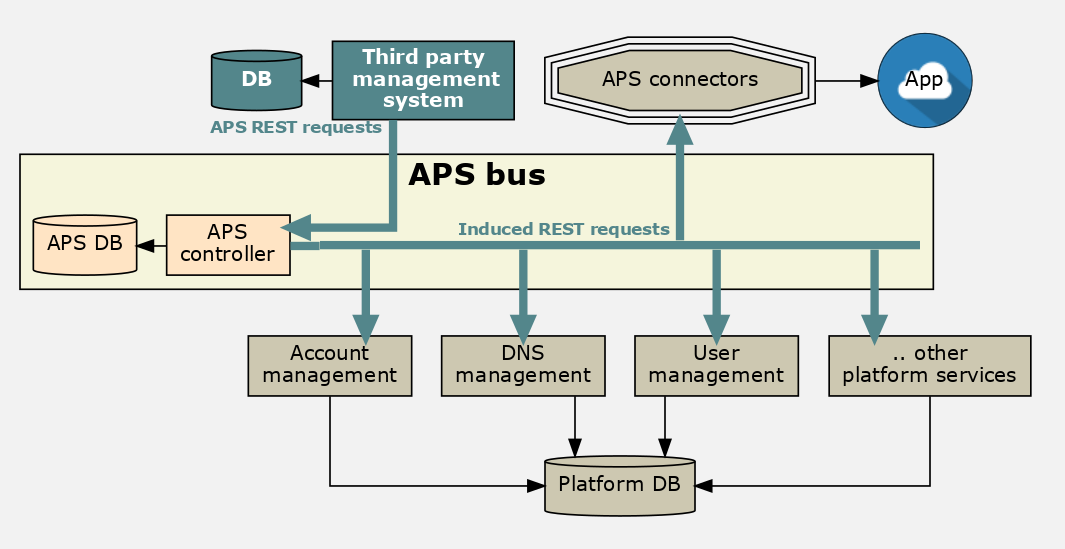Table Of Contents
Using Platform Services¶
Service providers may have their own management systems (accounting, billing, and so on) that must use the platform services and other cloud services. This is possible by means of the APS API exposed by the platform through the APS controller. This document helps service providers and system integrators monitor and manage the platform services and applications integrated with the platform. It explains scenarios with step-by-step instructions on achieving typical management goals.
In this document:
Structure and Authentication¶
The APS controller functions as the message broker incorporating all APS participants on the APS bus into an APS ecosystem.

The APS security model allows the following types of sender authentication on the APS bus:
Via an account, user, or subscription token obtained automatically through one of the control panels (PCP, RCP, CCP, or MyCP).
Via an SSL certificate that the APS controller generates for APS application instances. This method is used by APS application services deployed and provisioned on the platform.
Via the OAuth protocol as explained in the Using APS REST API document that follows this one.
Note
The last authentication method is the most relevant for external management systems.
Typical Management Procedure¶
The typical activity on the APS bus discussed in this document includes the following steps to reach a management goal:
Get security credentials from the platform.
Send a necessary REST request for the required service through the APS controller.
Process the response from the APS controller.
Proceed to the next action starting from step 1 if you need to update temporary credentials, or otherwise from step 2 until you achieve the management goal.
Scenarios¶
The first document in this set Using APS REST API contains some advices on using a REST client. Get familiar with this technique before you start with the scenarios explained in other documents.
The other documents are instructions and examples on doing typical operations with the platform and applications. You can combine those operations into your own business scenarios.
